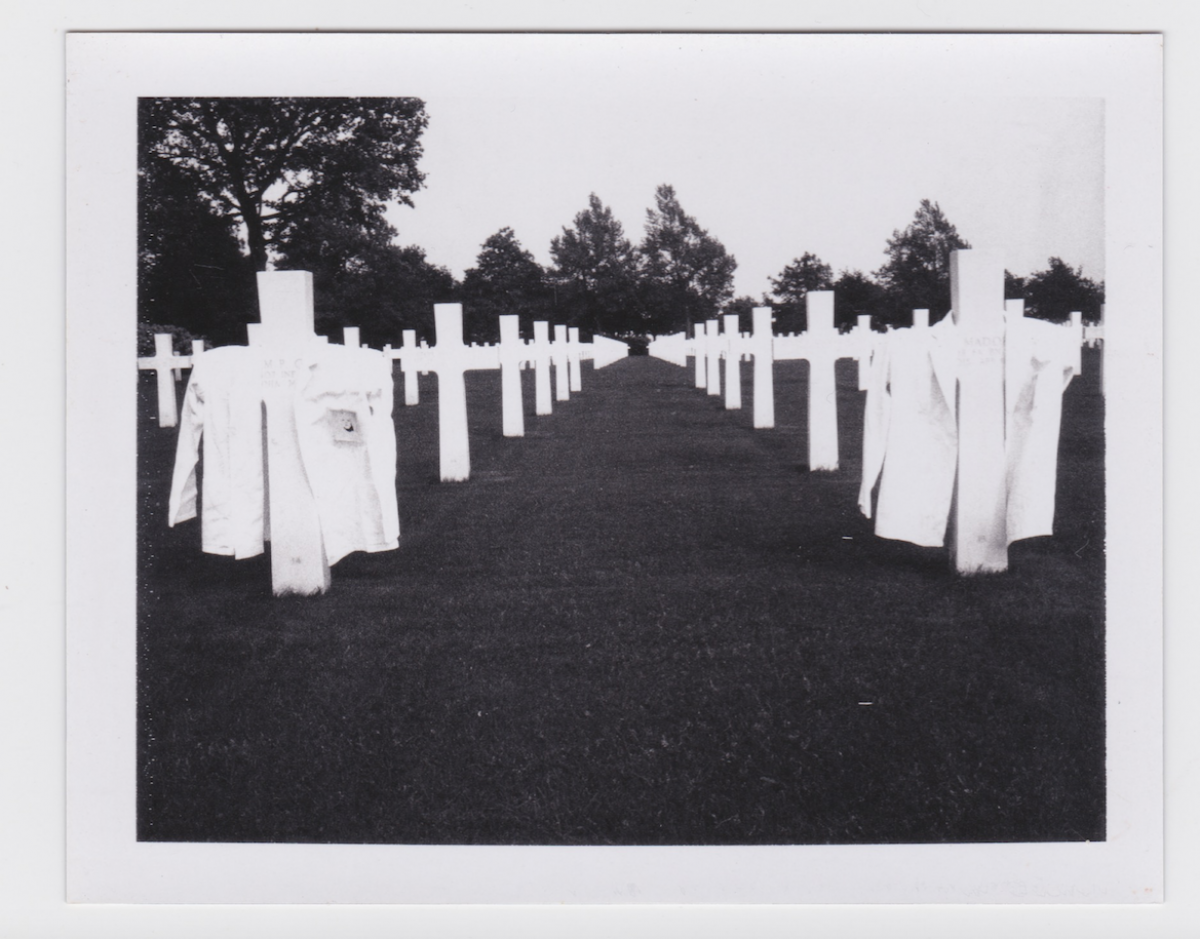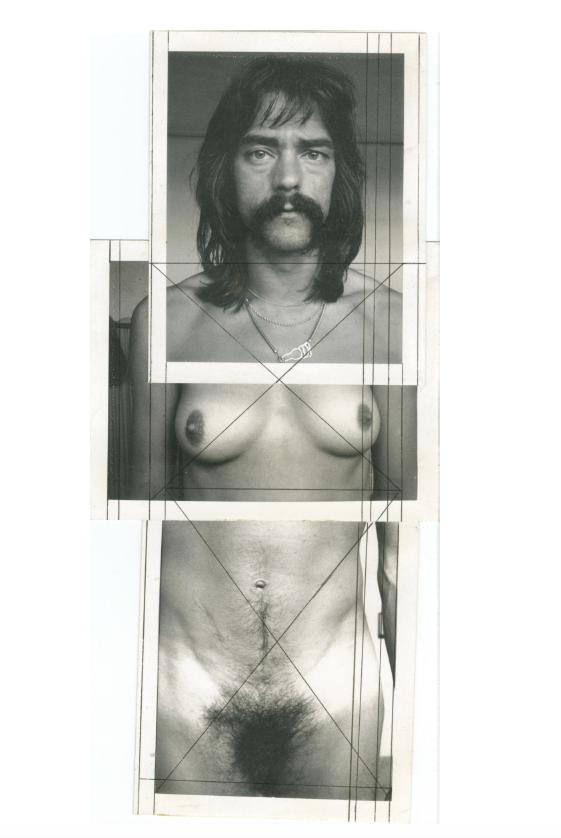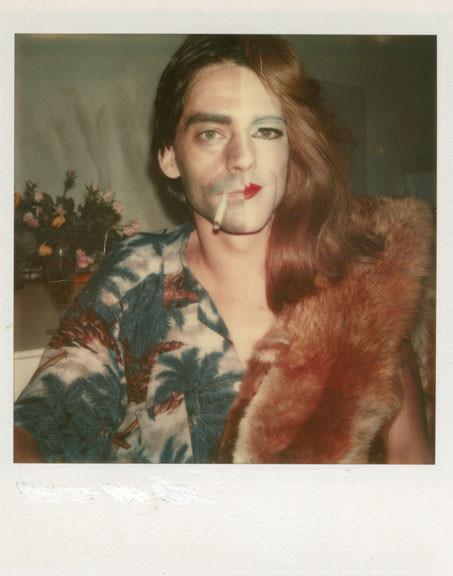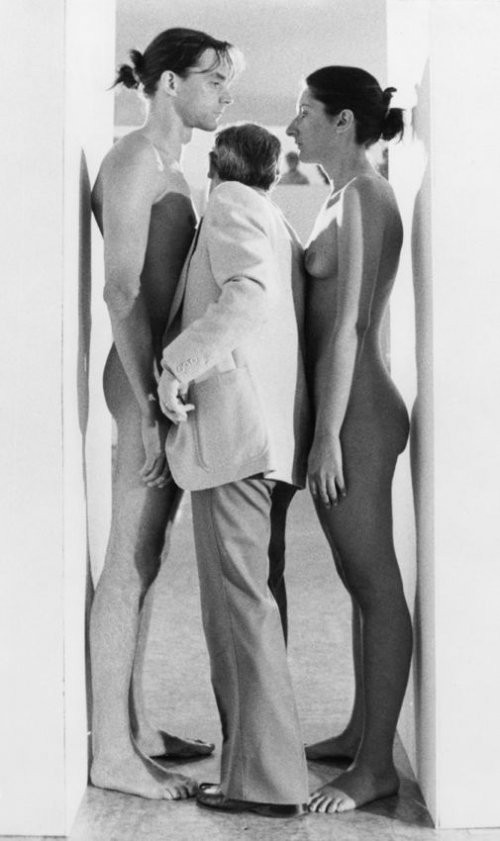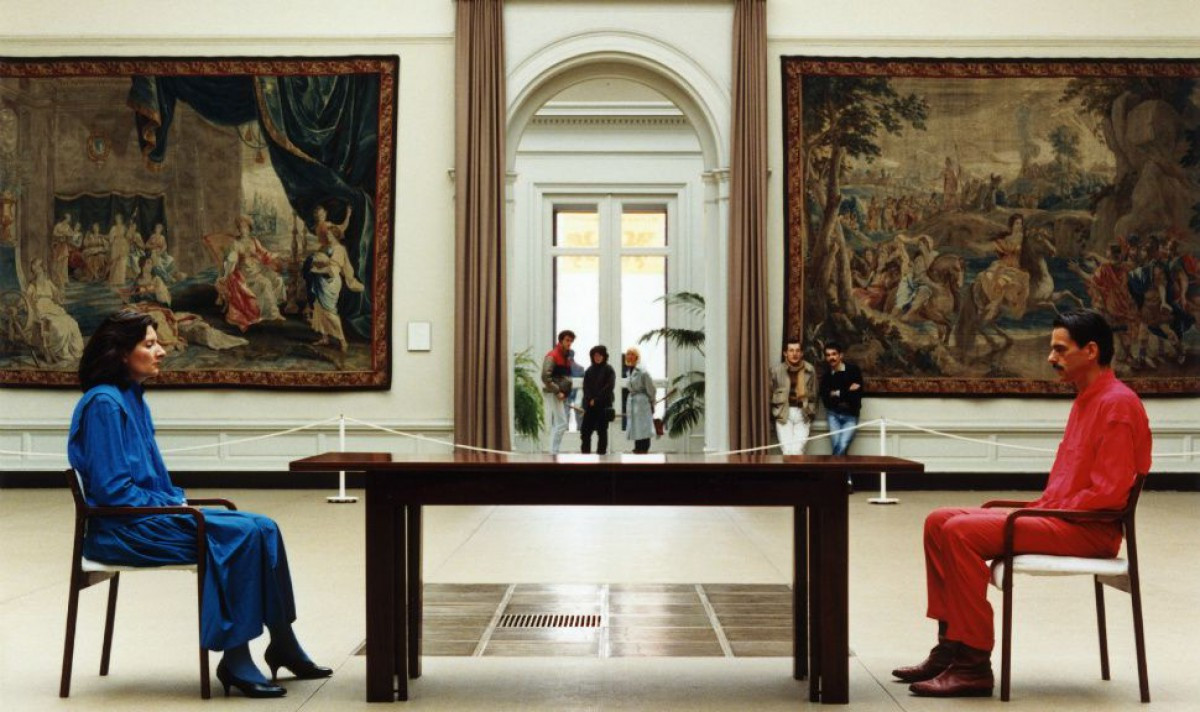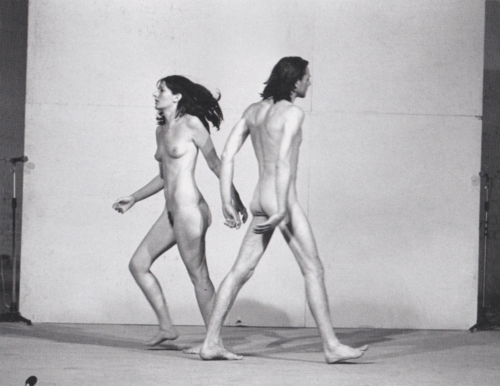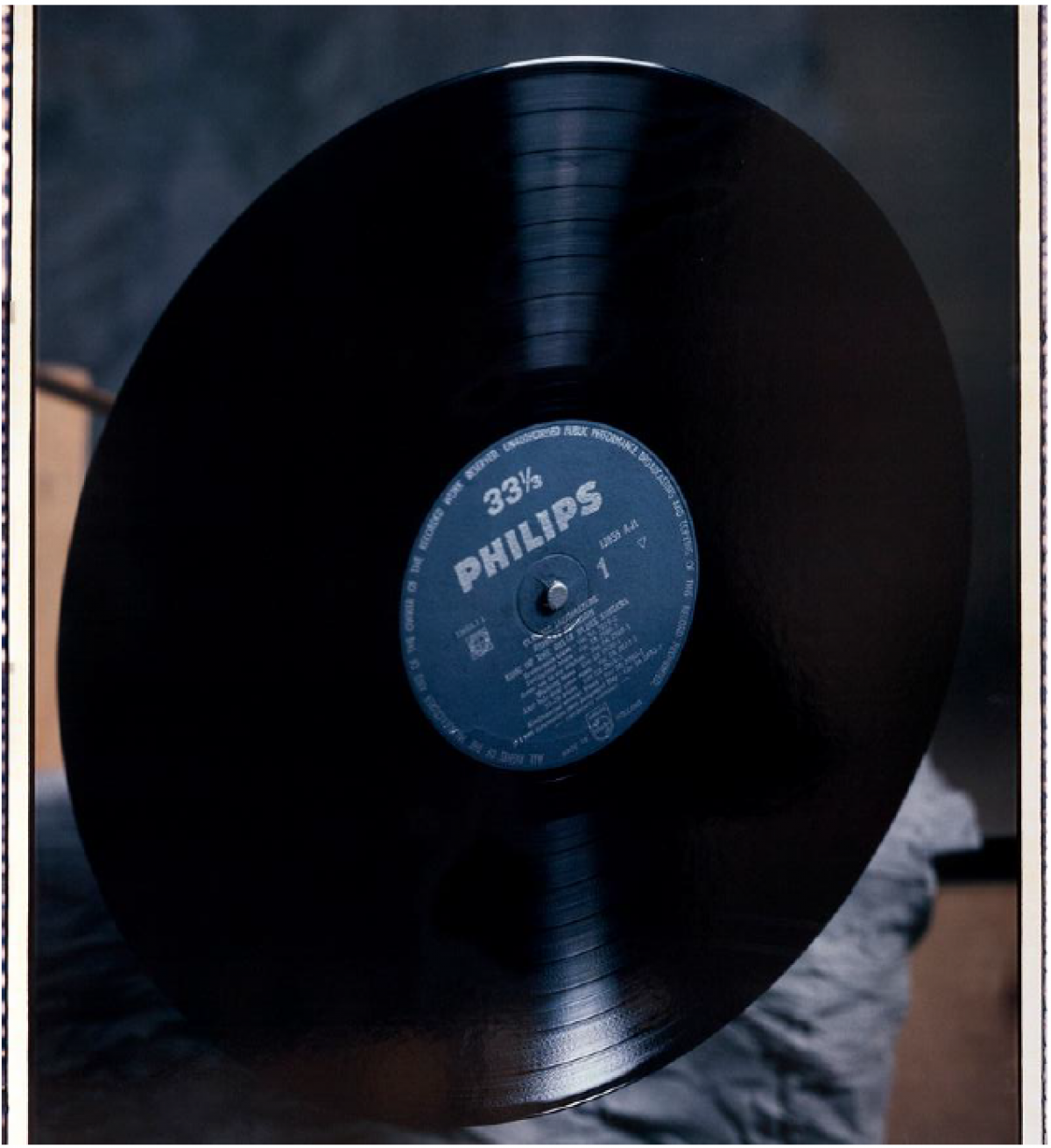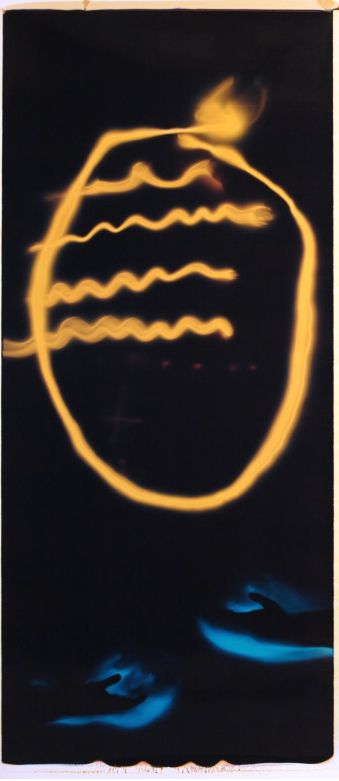Ulay
Published: October, 2012, ZOO MAGAZINE #37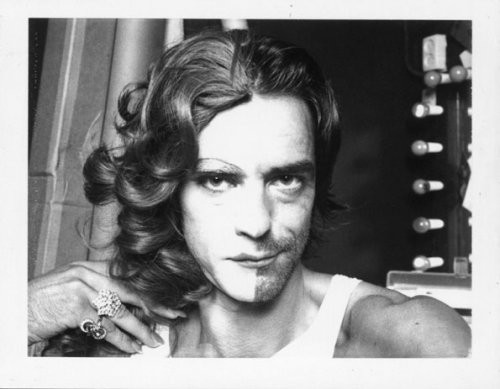
Imagine a combination of a charismatic personality, a subversive anarchist, a bright mind and a daring body. The artist Ulay, better than anyone has explored limits of body and soul and by doing so he has become one of the founding fathers of performance art.
MG: Lets start from the very beginning. You were born in Sollingen during the WW2.
U: I was born in a bomb shelter in 1943 during heavy British bombardments. I was conceived just around that time when my father came back from Stalingrad in February 1943.
MG: Did he sympathize with the Nazis?
U: No. My father was born in 1892; in the age of 22 he was drafted as simple soldier to fight in the WW1. Then in the age of 50 he was forced to go to Stalingrad. It was the deciding battle so they drafted all available men. My father came back 2 years later in a very bad shape. I grew up with my mother and my father as the only child, no grand parents, no uncles, no aunts. When I was 14 my father passed the way, not only because he was war traumatized but because he was in a very bad health condition.
MG: Did he talk with you about the war?
U: Never, the only thing he said to me: as long as I live you will not join the army.
After his death my mother got panicked, she withdrew to a small place in the forest where she stayed till hear death without any intercourse with the society. Nobody had contact with her. That means that I was drawn back to myself.
MG: How did you live?
U: I had to manage and I did. It is a long survival story. As an orphan at 15 without any family support you have to become smart, street smart and otherwise smart, you meet wrong people and good people. At the end of the journey you are what you call a self-made and self-taught man. The good thing about it is that you cannot blame anybody except yourself. In my case I become very stubborn. When I was 21 I married and one year later got a child; I wanted to experience how does it feel to have a family. But 3 years later I decided to leave Germany.
MG: Not only Germany but also your wife and your son?
U: Yes, I left everything behind what I had, among others 2 photographic enterprises in industrial and architectural photography that I had built up.
MG: When did you start to be interested in photography?
U: The real interest began when I was 20. Before that I explored the industrial photography, technical cameras, die Sachlichkeit photography – they are all very German. Then I discovered that I had different ambitions and different desires, which I couldn’t explore in Germany.
M: Why not?
U: Because of the war the country was devastated, demoralized, there were no men but only women who had to clear up the whole mess. A devastating communal emotion. I didn’t want to go on with the industrial photography, there was something else lurking at me. My inner voice was telling me: take another course, go another way.
MG: Didn’t you have guilty feelings to leave your child?
U: No. When the child became 3 I decided to leave. I woke up my wife at 2 in the morning, made her a cup of coffee and told her: “I’m leaving”. Thanks to the photography business I had quite some money that I could leave to her. I said: “I will borrow the car and will call you at the destination so you can send someone to pick it up|”. I went direction Prague, to the German-Czech border. Bad timing, it was 1968 so I was withhold by strange people with fur huts and red stars who said ‘njet’.
MG: Why did you choose Prague?
U: Because it was a very mysterious place for me but also because they had a very interesting theatre and film academy. I wanted to enrol there and do something completely different.
MG: The Russians invaded your plans as well.
U: When I was hanging around the border drinking vodka with the Russians I found a German newspaper in which there was an article about the Provo’s in Amsterdam. They were constructive anarchists, rioting against the police but they had good goals. They wanted to make the city car free, create more green spaces, to make a city liveable, which is still actual today. It was before Bader Meinhoff and RAF, the Vietnam War was going on, we lived in cold War era, but what they did was very positive. Then I thought why not Amsterdam?
MG: Was Amsterdam also a mysterious place?
Ulay: Totally, everything seemed so nice: this beautiful mediaeval place full of bridges and canals and the cute Dutch people. I took direction Amsterdam. First contacts I made were with people who used opium, so I had to use opium as well because “if you are not together with us you are against us”. I did it once, it was a great experience but I never did it again. Then I called my wife and told her that she could pick up the car.
MG: You decided to stay in Amsterdam.
U: Yes. I mingled with the Provo’s, that was great, I was blocking the roads in order not to let the cars go through.
MG: How did you live?
U: From hand to mouth. I still do. My principles are coming from the 60s: I have never had a religious confession, never joined the army, never joined a political party, never got any form of mortgage. This means that you live from hand to mouth, if you have more your mouth is bigger, if you have less then smaller.
MG: Your life philosophy is not to be dependent on anything.
U: Thanks to this I can act freely. Of course I’m dependent: on the food chain, on the climate, the social fabric more or less. But I kept my principles up and I’m proud of. Thanks to these exceptional conditions I could operate exceptional: I could chose to become artist, use my art to confront the conventional art audience. I had perfect means to start a little revolution in the art world.
MG: Before you came to Amsterdam you were earning and enjoying money. You knew what taste the money can have.
U: I was such an idiot: I invested a lot in race cars together with a Duke from Austria, Hubertus von Rohrer. We bought several extremely expensive cars.
MG: Choosing the art career in the 60s was choosing for poverty. You didn’t mind?
U: As Nietzsche said: Was mich nicht umbringt macht mich stark. I got very strong.
MG: Were you so convinced from the very beginning that you are artist?
U: Yes. I studied art in Cologne 1970 till 1971, but only 1,5 year. They didn’t have a faculty for photography at that time so I enrolled for painting and graphic. It was beautiful because the social connectedness among young people who wanted to become artist was big. It is not easy to become an artist. My professor invited me once to his atelier, made a goulash soup and gave me this terrible digestive Underberg. Than he said: “I suggest that you leave the academy, not that I don’t like you or you had no talent, but you have too much experience, you could teach photography if we had this department”. That was hard because I like the social fabric of this place. But I took this advice and moved on.
MG: So you are autodidact.
U: Yes. But after being professor at the Rietveld academy in Amsterdam and art academy in Karlsruhe I can tell you that you cannot learn art at school. You can learn a lot about art but making art and taking all responsibility on yourself is different.
MG: How was the situation in the 60s when you started?
U: Artists from 60s and 70s belong to the anti-art, anti-aesthetic generation. I have always shot my Polaroids straightforward; I didn’t care about the light conditions or formal aspects. I was never busy with the truth; I was always busy with reality. It is a big difference.
MG: What was anti-art for you?
U: Thomas McEvilly, one of my favourite writers wrote a great book the Triumph of Anti- Art, in which he wrote an essay about me in this context. The anti-art started really with Dadaists. And then through the whole 20th century you have this anti-movements neo dada, conceptualism, performance etc. Of course many artists were revolutionary in the late 60s without being in this category, like Polke, Richter, Kiefer, Immendorf or Penck, the war generation but they were more into formal aesthetics. It is not my cup of blood.
MG: How was the performance art born?
U: There are two American scholars: Rosalee Goldberg who traces the history of performance back 1896 to Ubu Roi, the first artist theatre piece by Alfred Jarry, while Kristine Stiles goes back to action painting. I don’t think that action painting has to do anything with performance. Pollock worked in solitude like most painters, he happened to be sometimes crazy and drank and got to this action. More interesting at that time was the Gutai group in Japan, which did real performances at that time. The Goldberg camp doesn’t focus on genders, the Stiles’ camp is highly gender oriented.
MG: How did you start with performances?
U: I have been always involved in photography. Being a Polaroid photographer I started to use myself as a model or an object for identity investigation. As I had no background information on my family and relatives, at one stage I just wanted to know who I actually am. It has to do something with Amsterdam, because by changing Germany into Amsterdam I got a German profile. So I started to investigate myself simultaneously with looking at other people. Those other people were always coming from the margins of the society: homeless, alcoholics, transvestite or transvestites. This genre of people interested me most because there were all out of social order, out of convention of the society. So was I. At the same time I exposed myself in the front of the camera.
MG: Who was taking the pictures of you?
U: Only me. They are all auto portraits. I had a great and highly sensitive camera. I would put it on the tripod and would do intimate performative actions in front of the camera, which was the only witness. It is like a delayed mirror, you take a picture, you wait 3 minutes and look again and again: is it me?
MG: Was it enough to get new insights about yourself?
U: I found it troublesome that photography would always stay on the surface of things, except its medical or microscopical variants, while I wanted to use the Polaroid photography was a means to investigate myself. So I started to cut myself, to make piercings, transplanting. Once I even got a tattoo transplantation, which was a first class surgery.
MG: Were you not afraid of pain?
U: No, I wanted to feel myself better. It is not about hurting. If you are in such a mood you must. It was all controlled.
MG: How did you infiltrate in the marginal groups?
U: There were special bars on the Rembrandt Square with transvestites and transsexuals earning their money there. There was always the same game: transsexuals refused to call transvestites by the girls’ names. I had a beautiful transvestites friend, but the transsexual would call her Otto. I was outsider but accepted. There was a stage that I was walking around as transvestite.
MG: To feel what?
U: Solidarity. Besides I wanted to make a clear step outside of normal. I was walking around with stockings and high boots and wearing sexy underwear.
MG: You were extremely provoking.
U: Because I never believe in the rules of the society. Now I’m only provoking by electronic cigarette.
MG: Were you showing these polaroids to the audience?
U: No, only once in the gallery Seriaal which was owned by Mia Visser, a big collector and Wies Smals who later established the Appel Foundation. In their last show in the gallery in 1974 they wanted to show the new directions, which they want to explore, something different, a completely new trend. It was not easy for me to agree on the show because my photos were extremely personal, private and intimate.
MG: But you knew that it is more than a personal search for your identity.
U: It was like a private archive or an individual mythology. I generated so much material but not for an exhibition. I felt like an artist, because I sensed that if I would chose to become an artist I could go really fast. But in the period between 1969 en 1975 I had no intention to put myself to in a critical art context.
MG: The two ladies managed to convince you.
U: they believed that it was something special. It was also hard for me because many intimate images were not only of me but also of other people. The exhibition was great, hundreds of people came, but the establishment was completely shocked.
MG: What did you show? Cuttings, mutilations?
U: Yes, also polaroids with freaks, hermaphrodites, transvestites, transsexuals. Harsh milieu. Than I was shocked in return, because many visitors found the images absolutely unacceptable and horrific.
MG: Were you disappointed by these reactions?
U: I promised myself that I would never make an exhibition again because people are so backwards and rejective.
MG: Did they never mind that you were German?
U: Interestingly, not. Opposite to other Germans I mingled with all incredible local people and was heavily involved in the city. I was for example one of the 3 people who squad the famous place Ruigoord.
MG: Were you anti-German yourself?
U: Never.
MG: One of your works around this time was situated in Germany where you steal a historically important work the Armer Poet by Carl Spitzweg from the Neue Nationalgalerie and put it the house of Turkish immigrants.
U: This is not based on anti-German emotions or considerations. This work by Carl Spitzweg from 1839, painted three times, was about the German sentimental identity. The image of this work was the only full colour reproduction in my reading book at school. The poet was burning his manuscripts to keep him warm, etc. but it was never meant as anti-German.
MG: You were a well-known crazy persona in Amsterdam when you met Marina Abramovic. How did you meet?
U: By the end of 75 I was asked by a Dutch TV-station to collaborate on a documentary on body art, a phenomenon that was then going on in Europe and USA. I agreed but under my conditions: we will shoot 24 hours but no drinking and no food. I had a great empty place in Amsterdam North, made out of concrete and glass with 2 single beds, a table and a refrigerator. The crew went with me for 24 hours in the apartment, we did interviews and talks for 13 hours and than all of the sudden I felt a draught, the door must have been opened. One of the crewmembers went out to buy food in a shop to sneak it in.
MG: Why did you put these conditions? To get people clear minded?
U: Clear minded and straightforward; interruptions through eating and drinking are destructive. More than this, I invested a lot in my performance, I wanted them to invest something as well, otherwise they would record and wouldn’t understand. But the promise was broken so I sent them out. The producer was complaining because they had to seek alternatives, and then they found Marina Abramovic, a young woman from Belgrade. They invited her to Amsterdam to do a performance in the Appel. She was sitting in the front of a table; on the table was a razor blade, a jar of honey, a whip and a spoon and on the wall was a little photograph of Thomas Lips. She started eating the honey – she disliked honey – ate the whole jar, then she took the razor and cut herself a star in her stomach, then she kneeled down and whipped herself for a long, long time. It was fascinating. After she finished I asked Wiese for some alcohol and disinfection stuff, went to Marina and nurse her.
MG: That’s how you met.
U: Yes. Then Marina did a performance, which was called Exchange of roles. She found a hooker, a great lady, almost 50. She agreed that Marina would sit in her window and that she will be in the gallery during the opening of the exhibition. I was hiding in a little car shooting the whole event with Marina in the window, she was talking to the clients but she wasn’t fucking with anybody. But she had funny talks. Our hooker collaborator was pretty stressed in the Appel not because people didn’t get to know the concept, but because she couldn’t answer the questions about the exhibition. But she did it with a lot of dignity.
MG: At that time you already had a relationship with Marina?
U: We were similar. Marina was and maybe still is famme fatale, and I was the masculine variant of homme fatale. I showed her my early polaroids and she was totally fascinated by them. At a certain moment we went to a Turkish restaurant and she asked: “what sign are you?” “I’m Sagittarius”, and I asked: “what sign are you?” “I’m Sagittarius.” “When were you born?” “On the 30th of November.” She said: “I don’t believe it: I was born on the 30th of November.” Then she asked me: “can you prove it?” I had a little pocket agenda with me; the first thing I do when I buy an agenda I tear off the page with my birthday because I don’t like to be remembered that I’m aging. I showed her that 30th November was ripped out. Three years difference.
MG: What was the main theme in your joint performances?
U: There were all based on traumatic periods in relations. A relation is the biggest obsession of the western society. In primitive societies not, it is what it is. In the western society it is the big issue, so many relations fail and collapse.
We were the prototypes, the models for a male/female relation and we were beating, kicking and hurting each other. All the performances were the traumatic fears within our knowledge and observations of male-female relationships. But our private relationship was wonderful. We were so in tune. Marina was making sweaters for me, we were cooking together- it was wonderful. But during performances we lend ourselves to models for impossible relationships or fears. And fatality.
MG: Did you talk a lot about your work?
U: We never talked about the concept of the performance until we were on the spot. Wherever we were doing performances, be it in Genève, Liege, Gent, Sidney or Documenta, we created them on the spot. Which was very uncomfortable to the organizer because we didn’t know the title or the concept until we were there.
They had to give us a carte blanche. The good thing about conceiving a performance together on the spot is that it heightens the authenticity; you always refer to something which is nearby and that’s important.
MG: Were you never afraid that you would fail in front of the public?
U: The audience learned in one stage to be afraid of us. We did performance of which I know that the public estranged, like the performance in this huge underground concrete parking place, above a department store, at the evening of the opening of Documenta 6. We didn’t agree to perform in Fredericianum. We started the performance about 8 o’clock. There were two equal columns in the colour of the concrete. Firstly we took off our clothes and then, naked, we started to run full speed against the columns. The sound was amazing. All of the sudden there were thousand people there.
MG: How did you recuperate? It must be extremely exhausting.
U: The most common question was: did you have pain? We didn’t do it for pain, neither did it hurt. We were so perfectly able to adjust our bodies to our minds.
MG: How did you prepare yourself for this?
U: Mentally, meditations came later when we started the Nightsee Crossing sessions. There are special techniques but at that time we just could do this. The beauty was the combination of the male and the female; a single performer can get lost while whatever happens in a dialogue between the spectator and us, we always have each other and our dialogue.
MG: How can the spectator get lost in the dialogue with the performer?
U: To endure a heavy self-mutilating is usually hard for the audience. If you see two people fighting on the street you would react. During the performances the spectator starts accepting it and keeps looking without interfering. As result you get a completely different moral of the spectator and performer, the spectator becomes accomplices. Or pervert. The performance is a social- psychological event.
MG: How the two of you did communicate during a performance?
U: At one moment you go the location at and then you switch the button and enter your own conceptual physical and mental space. Only guided by the idea. We were totally focused and meditate on this idea, which we shared between the two of us. Some performances were so violent, so we had to stick to our concept.
MG: Did you like to provoke the audience?
U: I was intrigued by the psychology of the spectator. In 1977 we did a performance Incision in Graz in an art gallery. The performance was very simple: a rubber cord about the size of my little finger was tied up to the wall; I would step in it and put it on my lower torso. And I would expand as much as possible, as much as the elasticity of this rubber cord will allow and than catapult myself back against the wall. Marina would stand on the ultimate extension of rubber cord. The audience was in front. I was naked, Marina not. Prior to the performance we found an Austrian karate champion who was supposed to be a part of performance. He was standing in the audience. Marina was passive, I was exhaustingly active. His task was to attack Marina when I started to feel that my strength was exhausted to the ultimate. He was supposed to jump in the air and hit her with his both legs. He warned Marina that there was only one thing she could do, stay totally relaxed; that if she stay tense he would break her arms. The audience was focused on my activities, not on Marina; their sympathy went more and more to me, because she was passive. At one stage the karate man attacked her in a fraction of a second. She flew four meters away, I continued. He turned around like a cat and left.
MG: He could leave without any protests?
U: He had to leave because he was a part of the audience and the audience didn’t want to be part of the violence. Marina got up, she was smashed away, went back to the place where she stood and I continued. The most important thing was that we had manipulated the perception of the audience.
MG: Were you aware of the fact that performance could become so important?
U: No, in the late 60s and at the beginning of the 70s the performance artists were mostly women, and mostly women with very feminist ambitions. Marina and me were doing a relation work.
MG: Were you and Marina the perfect performance couple?
U: It is impossible: neither a performance couple, nor a perfect couple, because in that case you would never be able to do this kind of performance. Perfect couples don’t really exist. Perfect is harmony. Perfect is hermetic, thus the end of communication.
MG: Ok, you were not perfect but happy together. You were experimenting as artists, searching for what is art, what is body and soul. What happened that you decided to break up?
U: There are two interpretations of our breaking up: Marina has her interpretation and I have mine. Marina has taken very much advantage of our breaking up, she named me the black peter, a bad boy etc. She even went so far or so low that whenever she had an interview after 1988 she would say that she hates me.
MG: Didn’t you risk losing your artistic identity since you were an artist couple?
U: We were never Gilbert&George. I have always had a flirt with anarchy and still have. An intelligent courageous artist needs to choose subversivity. At one stage after 1981 the Ulay/Abramovic enterprise became an institution.
MG: What s wrong with this?
U: I’m an anarchist. Don’t try to institutionalize an anarchist.
MG: Could you be anarchist against your own ideology?
U: What happened was that people started to behave different to us, not straight forward or honest, they started to admire.
MG: You can handle it.
U: But I don’t like it. To be independent is part of my principles. When I discovered this I left this field as free man and a free thinker. Marina did it in the opposite way; she was working even more hard, with much success.
MG: What did you do after 1988?
U: When you break apart is a like a little death. Mainly because we were in a psychological and physical state of symbioses. You really fall in a dip. Artistically the first thing I did was to substitute the body with vessels and vases. There is a great tradition in Asia and Middle East that people decorate their houses with twin vases or vessels. It is not about symbolism of Ying and Yang but about a negative space. I also substituted the body for urns and vessels. I made a beautiful book for Centre Pompidou about it.
MG: You went back to photography.
U: But a different photography, a photography without photography. I was working life-size polaroids inside a camera. The idea of the life-size came from this incredible beautiful book by French film critic Andre Bazin titled the Ontology of the Photographic Image. Then I realized that you could combine the performance with photographic image when the object of subject in the photographic image is the same dimension of actual object. It discovered performative photography.
